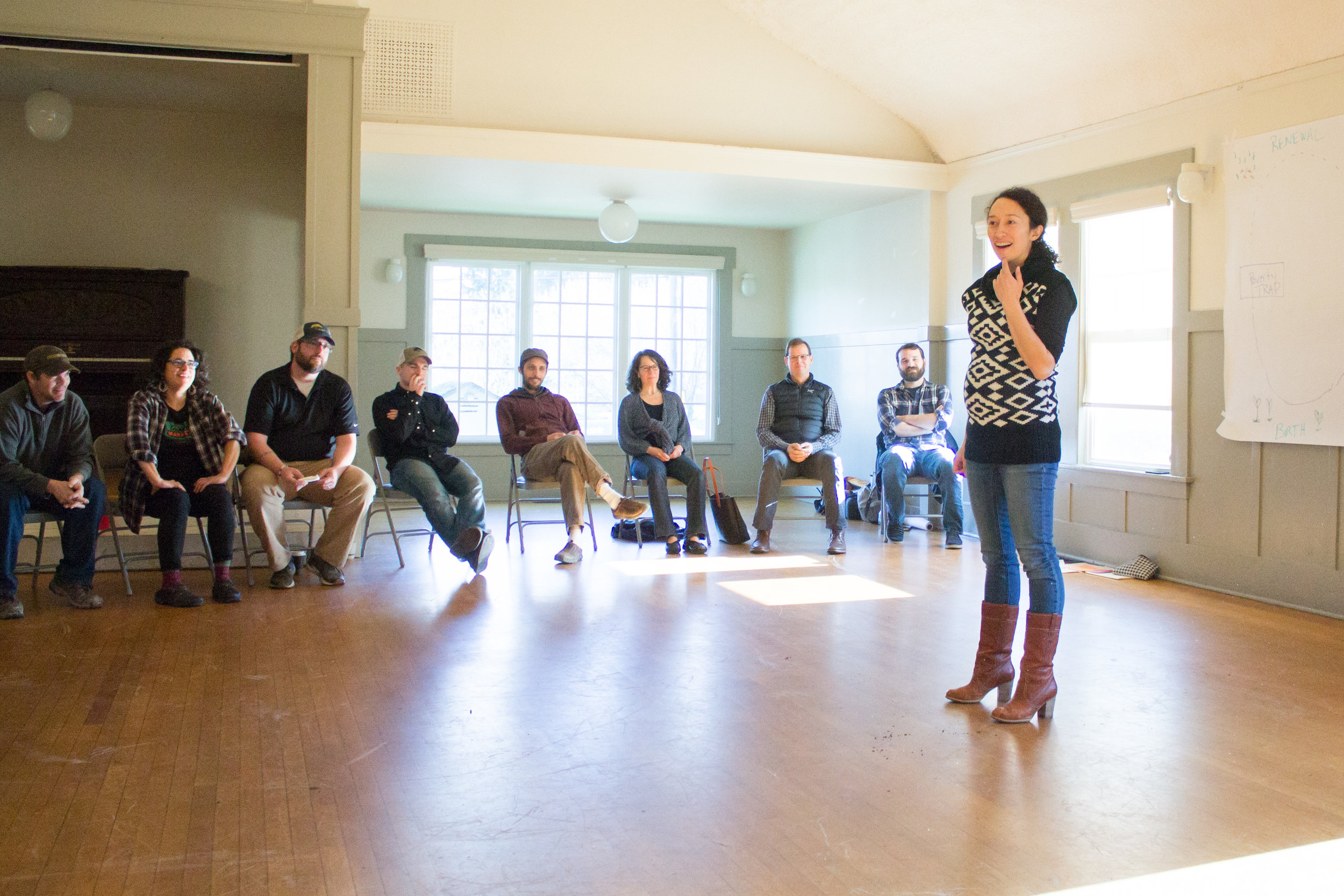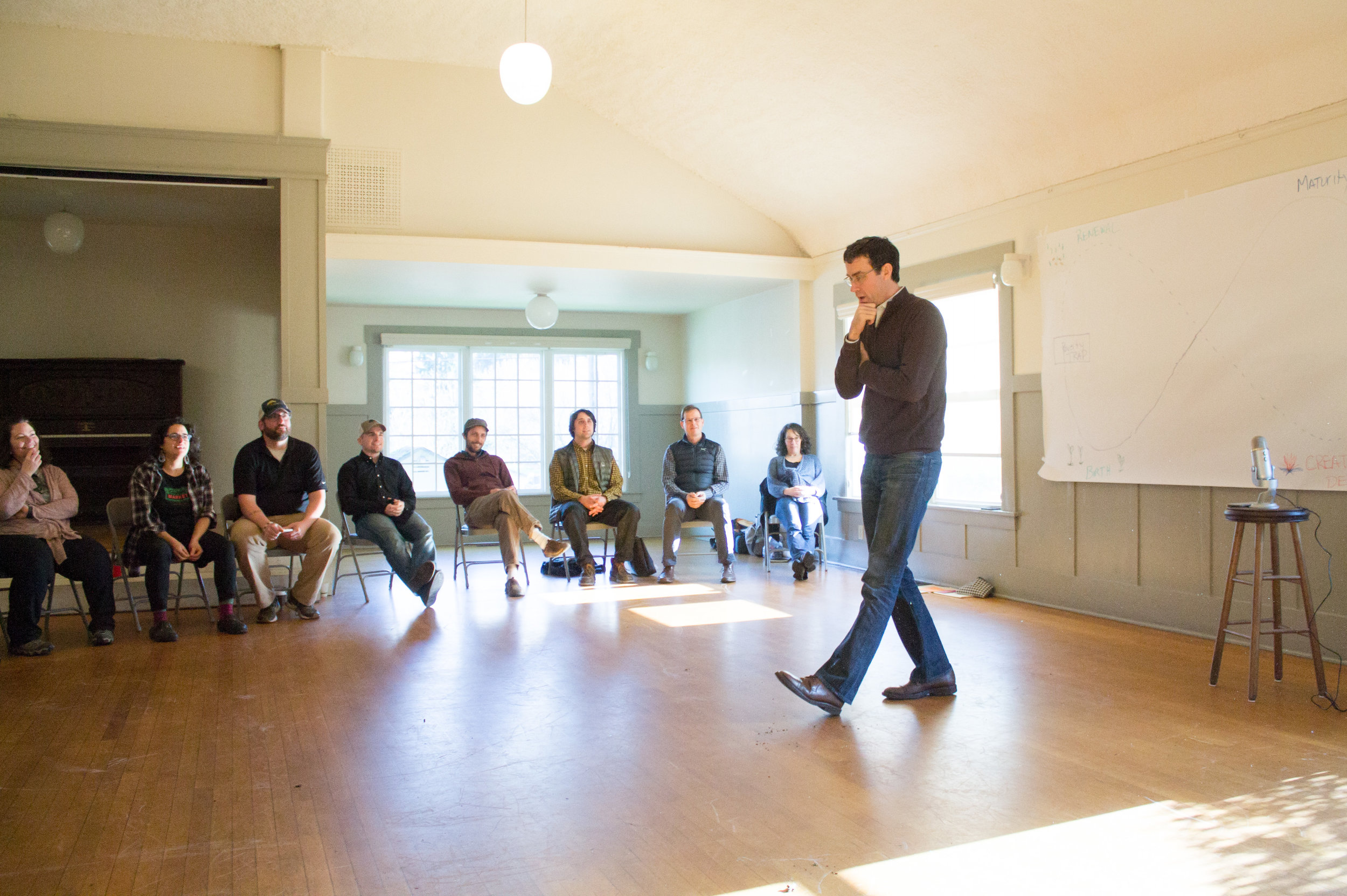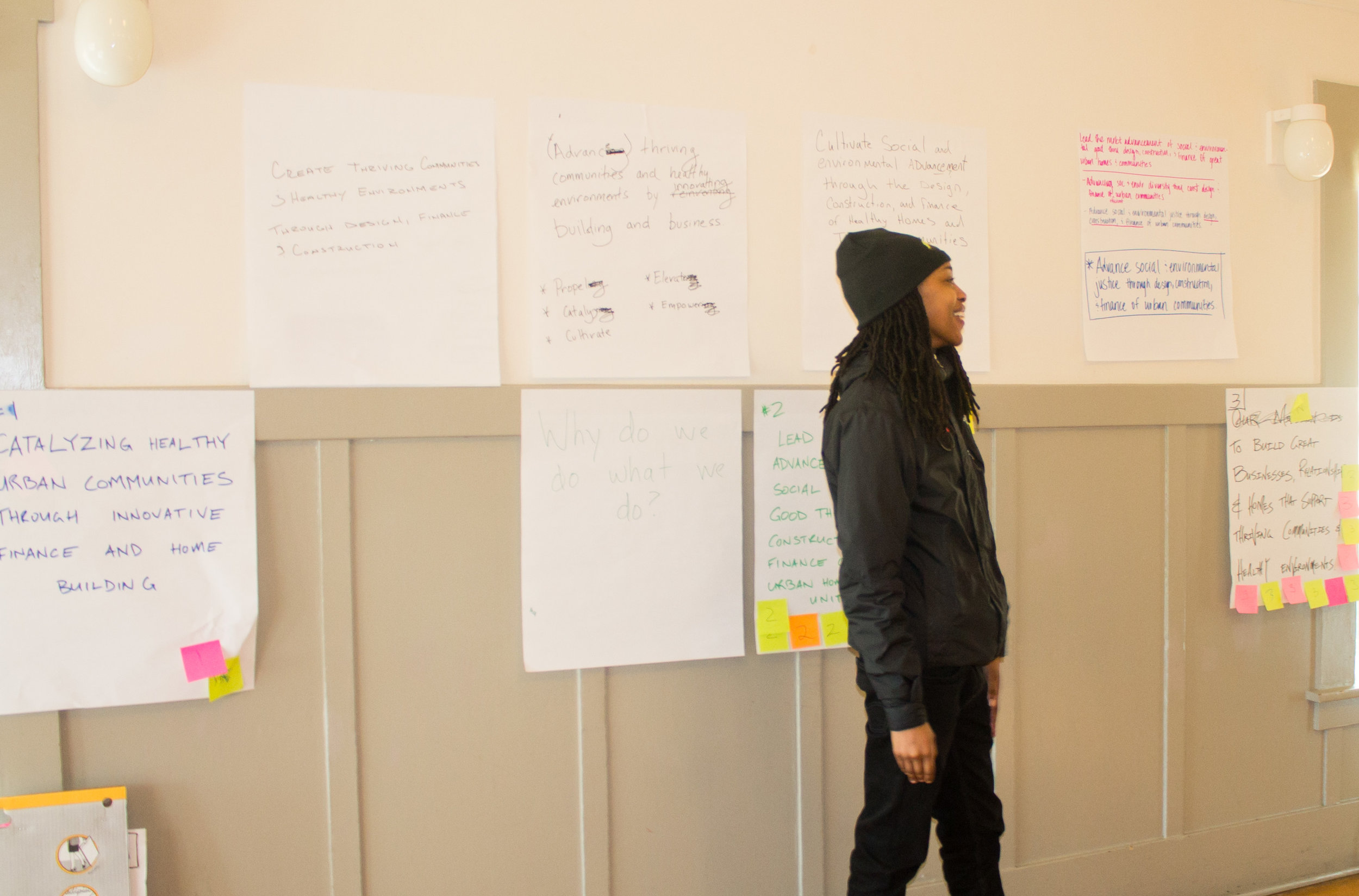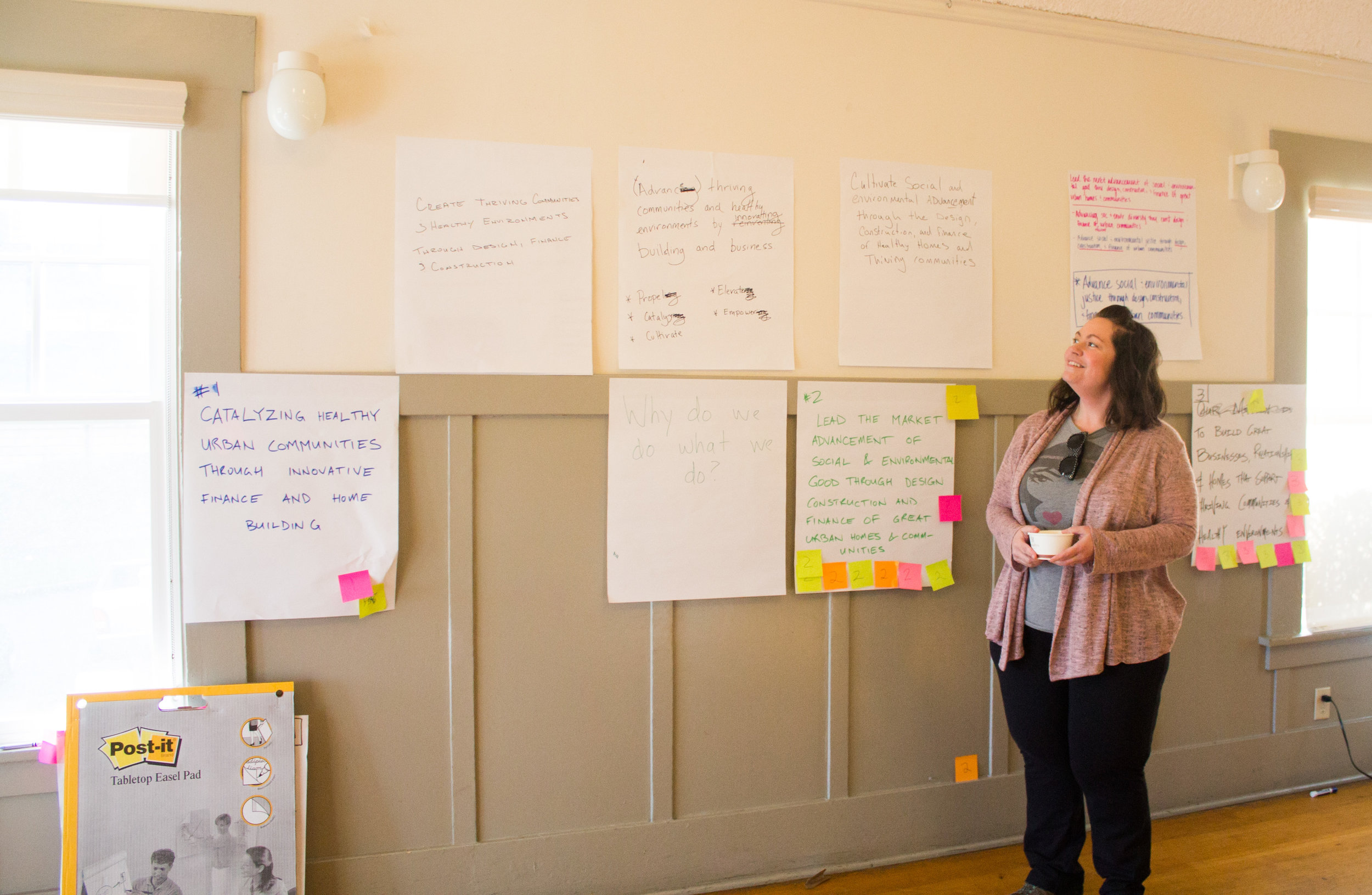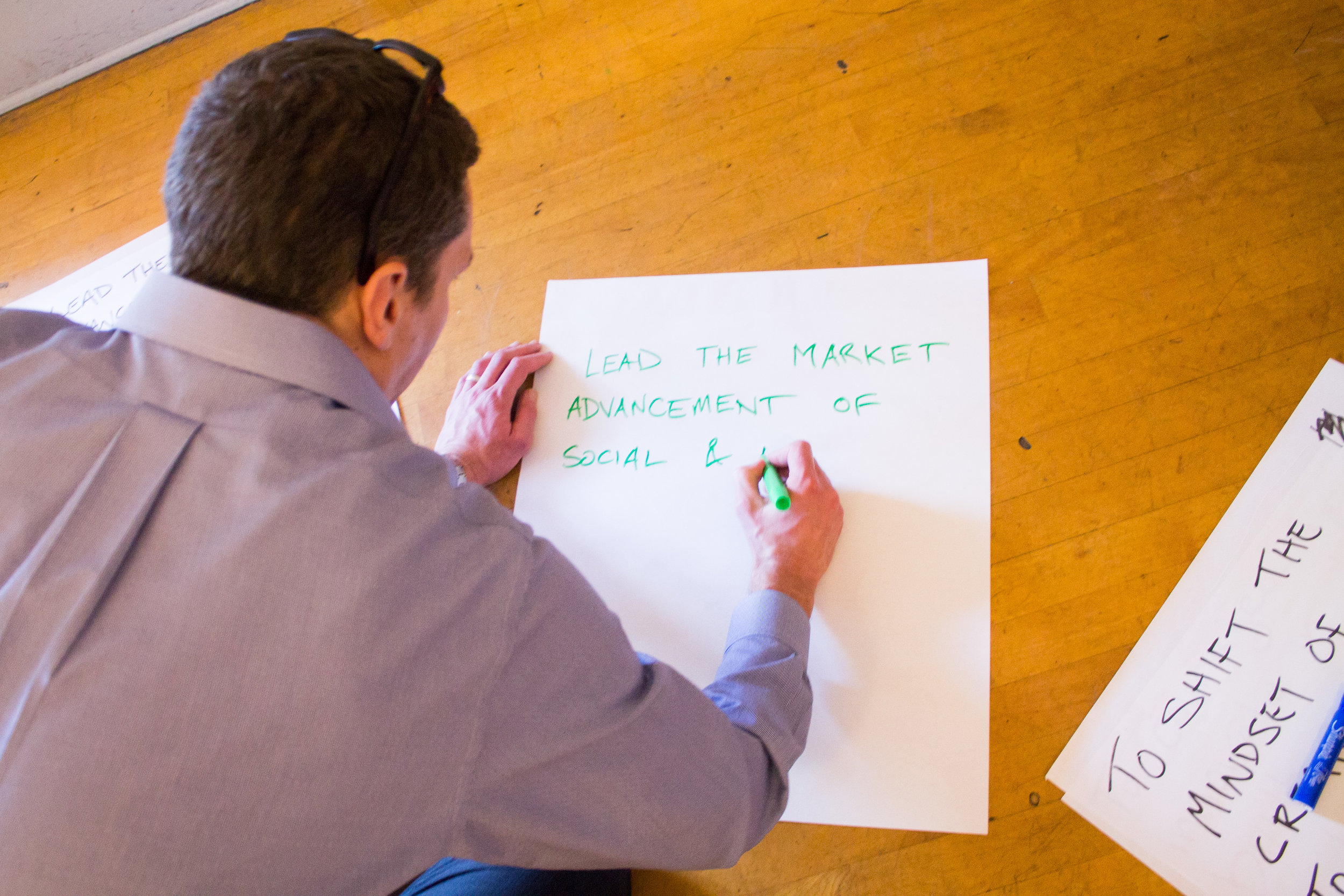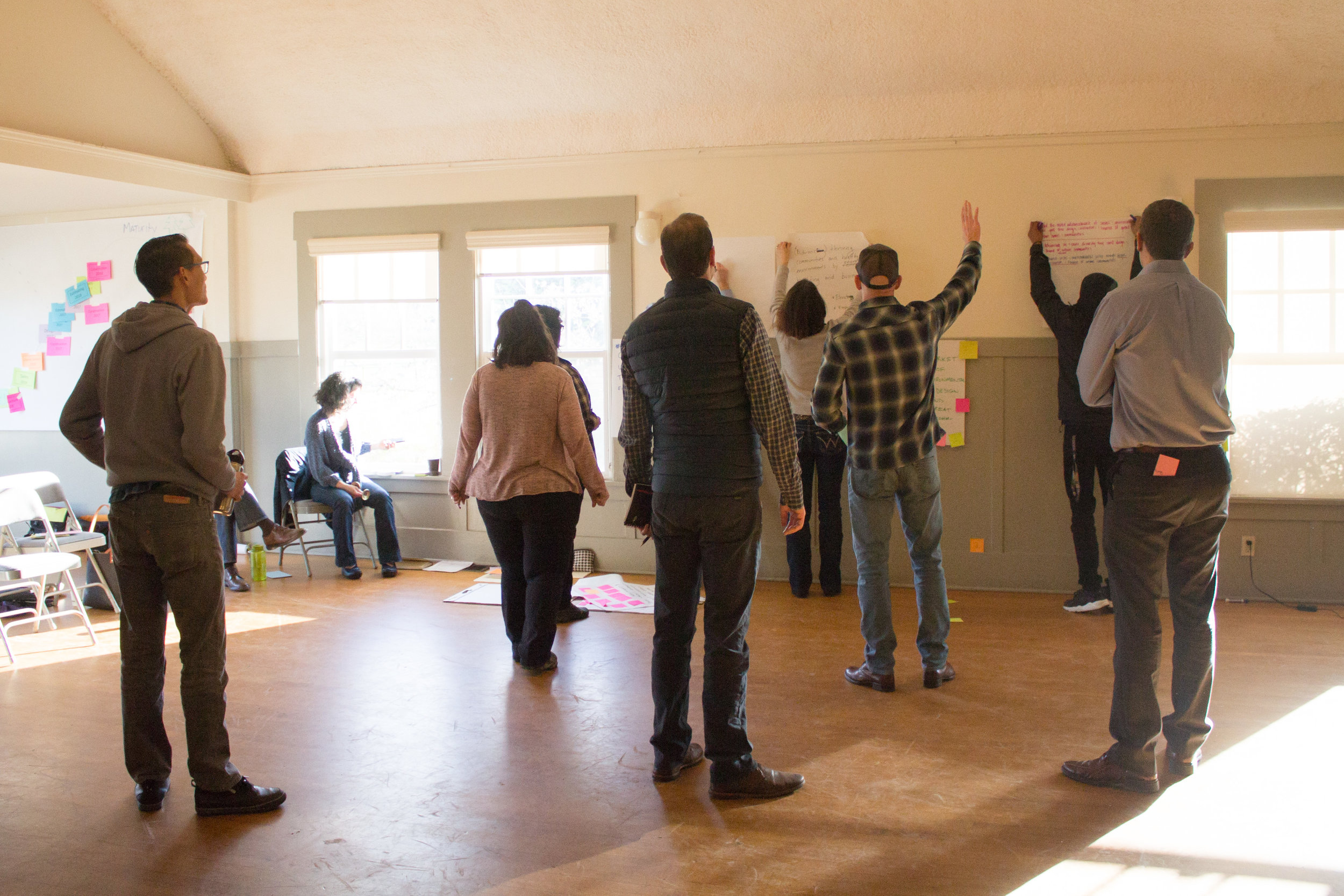Green Canopy builds homes, relationships, and businesses that help regenerate communities and environments.
Green Canopy is pleased to announce a new mission statement that has developed from much thought and collaboration.
“Mission statement” is one of the first terms inside startup guides, marketing courses and business plans. It can feel like fluff on an entrepreneur’s checklist of a million-and-one things to manage — a checklist that also includes terms like revenue and retention rate.
And a mission can become fluff that has little real impact internally or externally. Aaron Fairchild, CEO of Green Canopy says, “Where intention and attention go, energy flows.” A mission statement helps set intention and attention, ensures stakeholder alignment, guides strategy, and helps differentiate — creating a sustained competitive advantage and supporting the long-term success of an organization. This has been Green Canopy’s process:
Schedule Space to Review Annually
A mission statement can start to fall flat as company and client needs evolve. To address this, create space with your leadership team to ask questions like:
Does our mission statement still compel us to go to work in the morning?
Does our mission statement still encompass all of our current and future plans, is it relevant?
Does it reflect the organization’s theory of change?
Generate Ideas with the Board and/or a Small Group of Long-Time Stakeholders
If the answers to the questions above reveal some necessary revising, bring your responses to these questions to your Board of Directors or small group of stakeholders who are invested in the future of your company. Enlisting the consulting services of LIFT Economy to facilitate this process helped Green Canopy ensure all group members had equal opportunity to participate:
LIFT began by surveying the Board and a group of Stakeholders, identifying words and aspects that feel stale or missing
LIFT crafted test mission statements based on survey results to rotate around and generate ideas
Leadership came together with a group of board members and stakeholders to review, revise and create about three new test mission statements
Take These new Mission Statements to the Entire Team
Every January, the entire Green Canopy gathers together for an entire day to reflect on our mission and values — we call it our “Mission, Vision, Values Retreat.” Getting the whole team’s buy-in on the mission and values helps everyone speak the same language and take ownership of their work and the company. McCarthyConsulting helped facilitate this process so that everyone on our team has equal opportunity to participate.
Started with an ice-breaker game to get everyone loosened up and thinking creatively
Put up the new mission statements on the wall from the small group brainstorming
Gave everyone about five small sticky notes with 10 minutes to place their tags on the words or phrases from each that resonated with them, creating a heat map
Took 15 minutes to break up into about five groups (for a company staff of 30+) to write five new mission statements based on the heat map
Put the five new statements on the wall and gave everyone 10 more minutes to each place five more sticky notes on the statements and words that resonated with them the most
Collected the top three new mission statements based on the heat map
Circle Back with the Board and/or Stakeholders
Shared the top three new mission statements with the Board and Stakeholder group
Discussed if one or a combination stands out among the rest based on the theory of change and the direction the company is heading
Gave everyone about 15 minutes and paper if needed to individually try out combinations
Came together to share and craft the final version (a whiteboard works well for this)
Shared with Green Canopy shareholders to vote on and ratify the new mission statement
Share with Staff and Stakeholders
Sharing the final results with staff and stakeholders gives an opportunity to buy-in to the direction of the company once again and fosters a new sense of pride and ownership in the work and company.
Read more about our process for developing our theory of change, which greatly influenced this process and gave us clarity in our purpose and strategies. We also used a truncated version of this process at our “Mission, Vision, Values Retreat” to re-establish our corporate values for the year and how we want to operate as a team.
